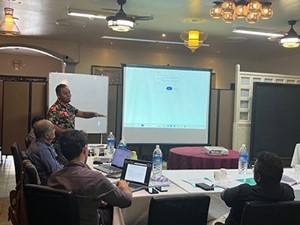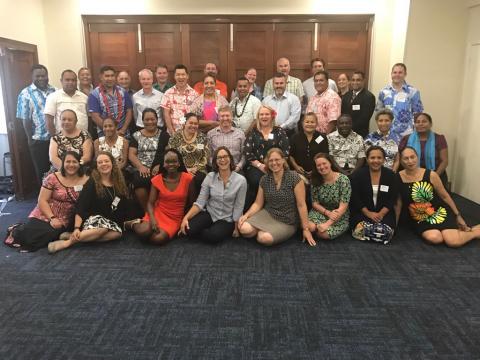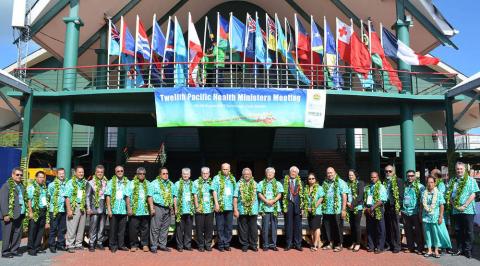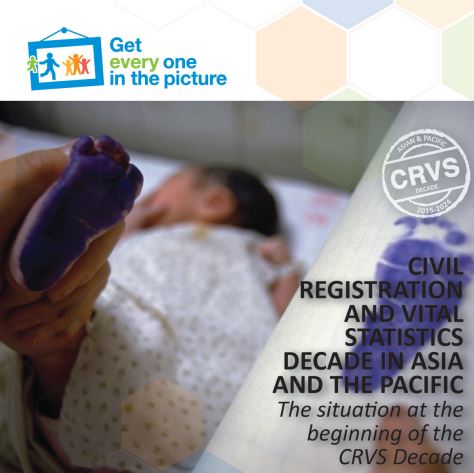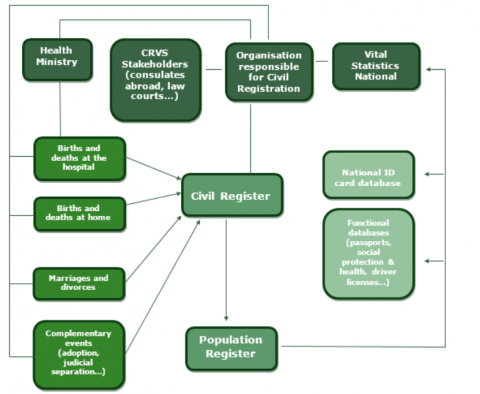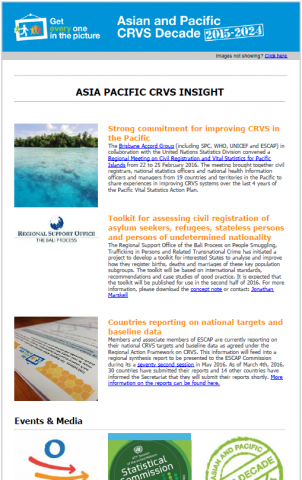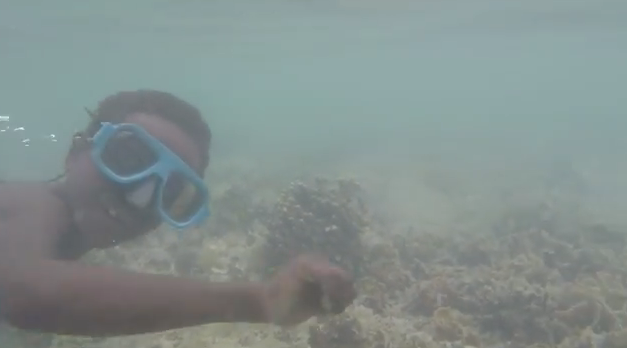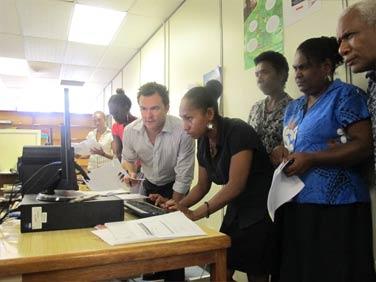The civil registration system of Solomon Islands is the responsibility of a specific department of the Ministry of Home Affairs (MoHA). It works in collaboration with the Ministry of Health (MoH) for birth and death registration. Vital statistics are produced by the SINSO (Solomon Islands National Statistics Office), which depends of the Ministry of Finance and Treasury (MoFT). A national CRVS committee has been established, with stakeholders from the MoHA, MoH, SINSO, ICTSU (Information and Communication Technology Support Unit, part of the MoFT, responsible for digitalization) and different partners. In 2014, a civil registration digital system, with a central database, was implemented in the country. In 2017, a review of the CRVS legislative framework was conducted to adapt the law to the current situation, as it hadn’t been updated in 30 years.
Solomon Islands have come a long way already to improve their civil registration system. In 2007, just 20 births were formally registered but by June 2014, more than 35,000 people legally had their birth registered. In 2017, the birth registration rate after one year was estimated to be 42%, and 28% in the general population, while the death registration rate was about 12%.
There is currently a lack of legislative framework which hinders the enforcement of registration mechanisms. Like many countries in the region, its geography, with 500 islands, a lot of rural communities and a lack of appropriate infrastructures to interact with them, is an obstacle to the development of civil registration.
Mr. Jeffrey Sade Deve, Permanent Secretary, Ministry of Home Affairs
Mr. Jeffrey Sade Deve, Permanent Secretary, Ministry of Home Affairs
Goal 1. Universal civil registration of births, deaths and other vital events |
Goal 1 Targets:
Goal 2. All individuals are provided with legal documentation of civil registration of births, deaths and other vital events, as necessary, to claim identity, civil status and ensuing rights |
Goal 2 Targets:
Goal 3. Accurate, complete and timely vital statistics (including on causes of death) are produced based on registration records and are disseminated |
Goal 3 Targets:
Goal 1. Universal civil registration of births, deaths and other vital events |
Goal 1 is an expression of the internationally accepted principle of the universal coverage of civil registration. The CRVS system should register all vital events occurring in the territory and jurisdiction of the country or area, including among hard-to-reach and marginalized populations.
Note: Information comes from the baseline report (E/ESCAP/72/22: www.unescap.org/sites/default/files/E72_22E.pdf) since no midterm questionnaire has been submitted yet.
National Targets:
BASELINE
201429%
TARGET
202485%
baseline
201417%
TARGET
202490%
TARGET
202460%
TARGET
202460%
baseline
201416%
TARGET
202480%
Goal 2. All individuals are provided with legal documentation of civil registration of births, deaths and other vital events, as necessary, to claim identity, civil status and ensuing rights |
Goal 2 reflects that CRVS systems provide legal documentation of civil registration to individuals and families for legal and administrative purposes. Legal documentation is strongly linked with a broad range of rights and activities, in particular legal identity. This goal addresses the distinction between the civil registration of a vital event and the possession of formal proof that it took place, in the form of legal documentation.
Note: Information comes from the baseline report (E/ESCAP/72/22: www.unescap.org/sites/default/files/E72_22E.pdf) since no midterm questionnaire has been submitted yet.
National Targets:
TARGET
202470%
TARGET
202450%
Goal 3. Accurate, complete and timely vital statistics (including on causes of death) are produced based on registration records and are disseminated |
Goal 3 highlights the critical importance of civil registration being linked to the production and quality assurance of vital statistics on the occurrence and characteristics of vital events.
Note: Information comes from the baseline report (E/ESCAP/72/22: www.unescap.org/sites/default/files/E72_22E.pdf) since no midterm questionnaire has been submitted yet.
National Targets:
TARGET
2017
TARGET
2018
Note: This target was not monitored as part of the Midterm Questionnaire on the Implementation of the Regional Action Framework for CRVS in Asia and the Pacific.
baseline
201478%
TARGET
202490%
Note: This country's objective has been modified to reflect the current understanding of the target, expressing the percentage of ill-defined codes to achieve.
TARGET
20240.4%
Note: In light of recent countries’ experiences, Verbal autopsy is not encouraged to be applied to a large population scale, but rather on a representative sample. To reflect this, Target 3E is not anymore monitored by the coverage percentage of Verbal autopsy, but by the use or not of Verbal autopsy and its different applications.
TARGET
2024Yes
TARGET
2025
TARGET
2025
TARGET
2025

National Coordination Mechanism
Status in Solomon Islands: Complete

Comprehensive Assessment
Status in Solomon Islands: Complete

National Targets for 2024
Status in Solomon Islands: Complete

Monitoring & Reporting Plan
Status in Solomon Islands: Complete

Inequality Assessment
Status in Solomon Islands: Not started

National Strategy
Status in Solomon Islands: Complete

National Focal Point
Status in Solomon Islands: Complete

Reporting to ESCAP - Baseline
Status in Solomon Islands: Complete

Reporting to ESCAP - Midterm
Status in Solomon Islands: In progress


